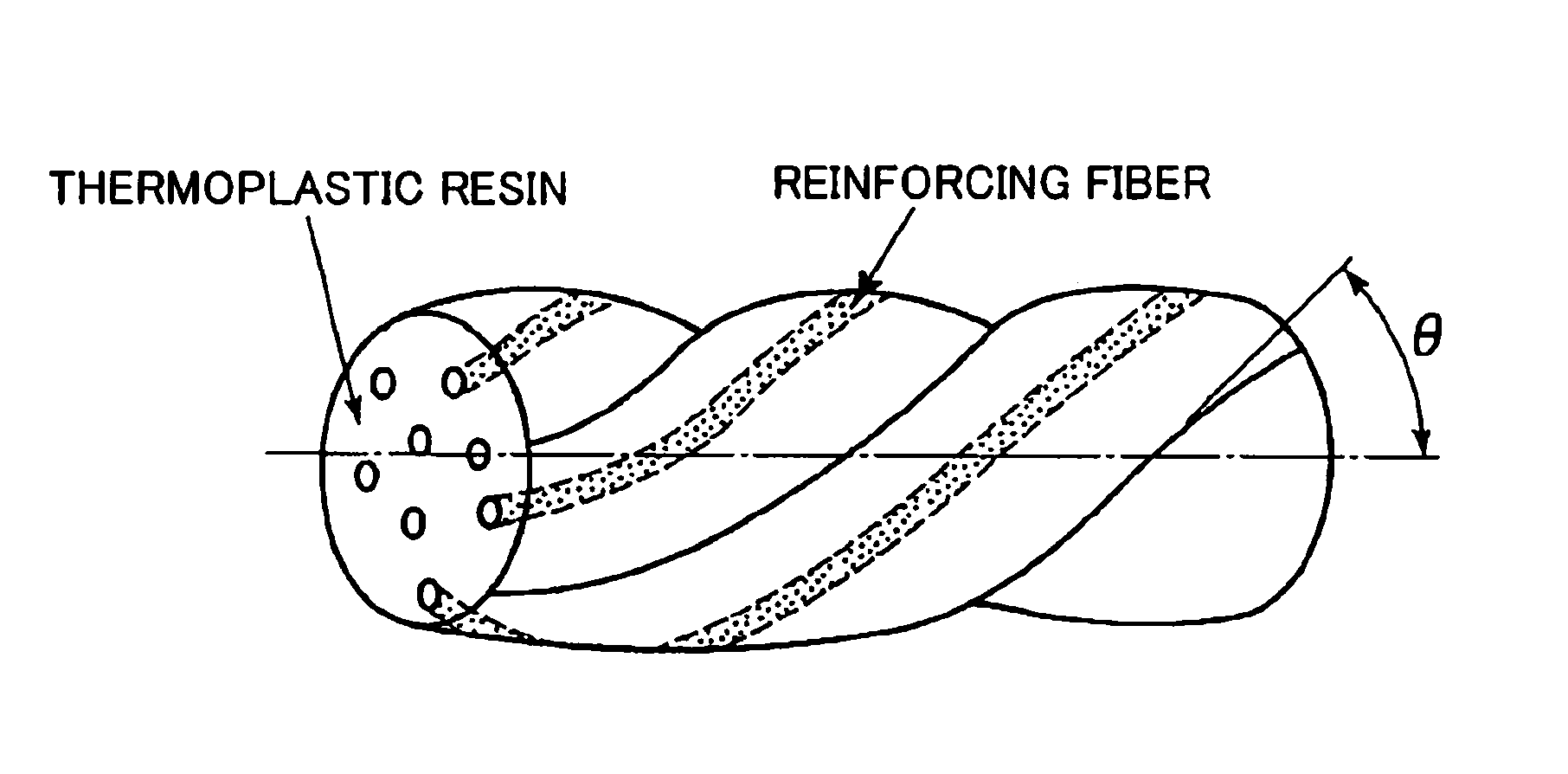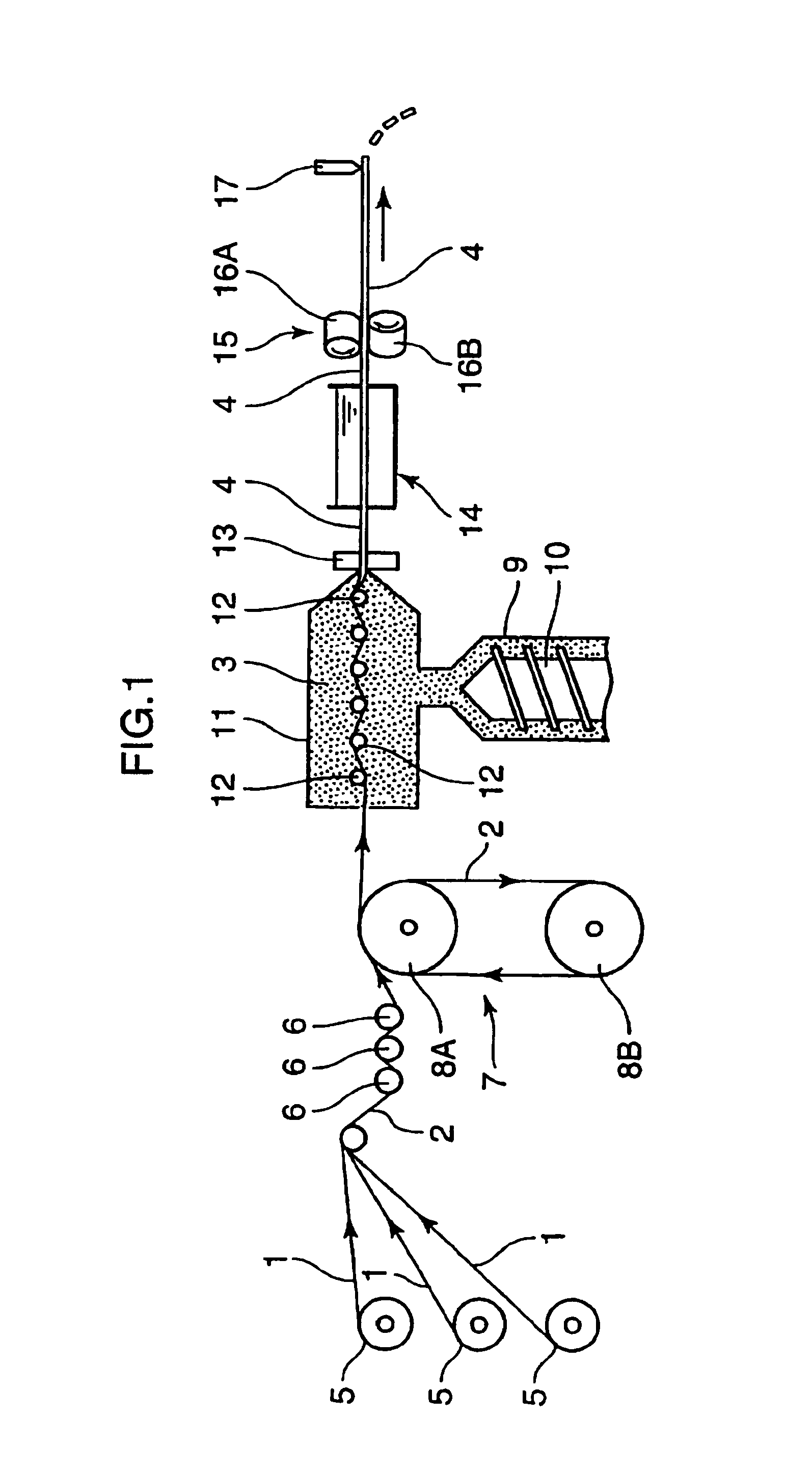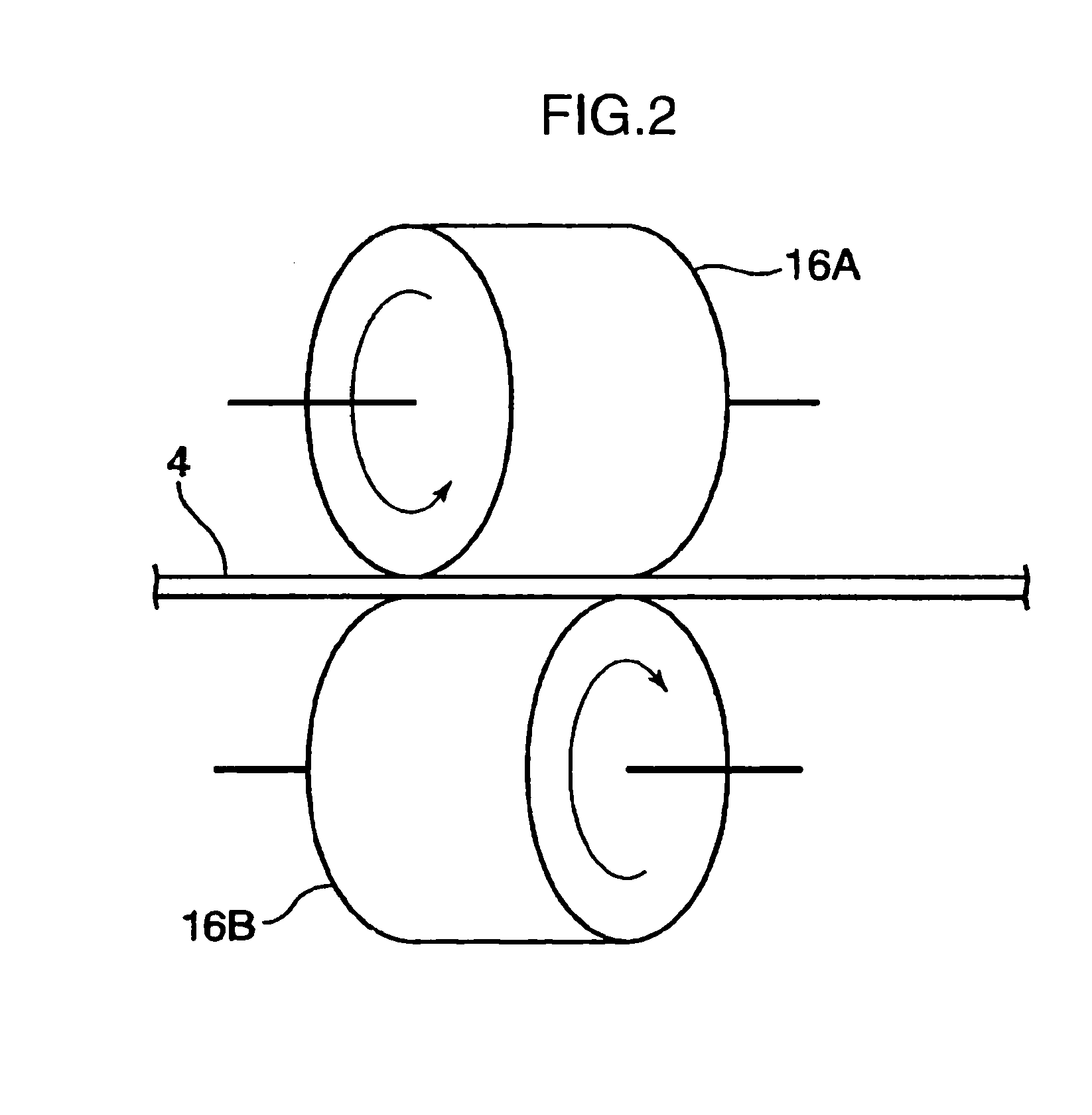Continuous fiber-reinforced thermoplastic resin pellets and manufacturing method of the same
a technology of thermoplastic resin and thermoplastic pellets, which is applied in the direction of synthetic resin layered products, transportation and packaging, coatings, etc., can solve the problems of poor dispersion of reinforcing fiber bundles in injection molded articles, deterioration of heat transfer to the reinforcing fiber bundle present in the center portion of the pellet, and thickening of the peripheral surface resin layer
- Summary
- Abstract
- Description
- Claims
- Application Information
AI Technical Summary
Benefits of technology
Problems solved by technology
Method used
Image
Examples
examples
[0058]A continuous fiber strand was manufactured with the manufacturing apparatus shown in FIG. 1 using polypropylene (specific gravity: 0.9 g / cm3) as the thermoplastic resin and mono-filament fibers of glass fiber (specific gravity: 2.5 g / cm3, fiber diameter df: 17 μm). Continuous fiber pellets having the dimension, diameter 3.0 mm×length 6 mm, were manufactured by cutting the resulting continuous fiber strand.
[0059]The cross section of the continuous fiber pellets thus obtained was observed using an SEM (Scanning Electron Microscope) to observe a distribution state (the degree of thickness of the peripheral surface resin layer) of the glass fiber bundle in the pellet cross section and to measure the above-specified ratio Af (%) indicating the dispersion state of the reinforcing fiber bundle. In Table 2 below, regarding the evaluation of the distribution state of the glass fiber bundle (reinforcing fiber bundle) in the pellet cross section, those having an adequate thickness of the...
PUM
| Property | Measurement | Unit |
|---|---|---|
| diameter | aaaaa | aaaaa |
| diameter | aaaaa | aaaaa |
| length | aaaaa | aaaaa |
Abstract
Description
Claims
Application Information
 Login to View More
Login to View More - R&D
- Intellectual Property
- Life Sciences
- Materials
- Tech Scout
- Unparalleled Data Quality
- Higher Quality Content
- 60% Fewer Hallucinations
Browse by: Latest US Patents, China's latest patents, Technical Efficacy Thesaurus, Application Domain, Technology Topic, Popular Technical Reports.
© 2025 PatSnap. All rights reserved.Legal|Privacy policy|Modern Slavery Act Transparency Statement|Sitemap|About US| Contact US: help@patsnap.com



